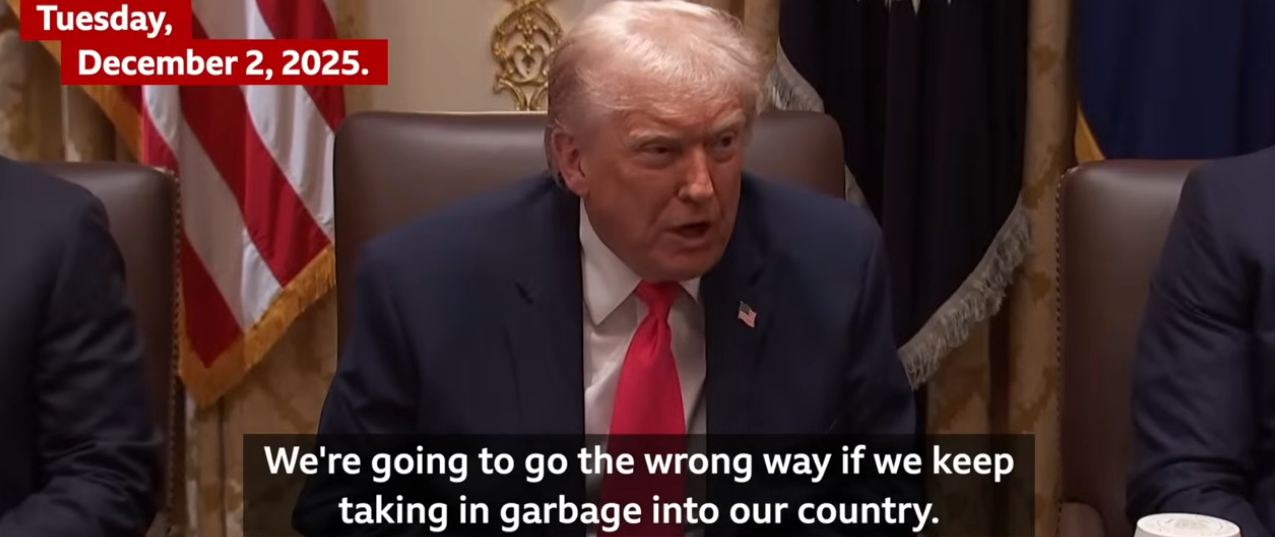Photo: YouTube
On February 10, 2023, BlackEconomics.org released an analysis brief entitled, “Cutting Lifelines.”
https://www.blackeconomics.org/BELit/cl.pdf
This analysis brief is a companion piece to the February 10th release. It urges Black Americans, who have rigid and thick lifelines to government, to realize that their lifelines may be cut partially or completely—possibly sooner than later. This is not a vacant statement without seemingly compelling evidence, which is offered below.
Unsustainable US Fiscal Situation
The US Government’s own Government Accountability Office, in its annual report to Congress in May 2022, warned in its opening statement that “The federal government faces an unsustainable fiscal future.”[1] It is safe to say that no dramatic action has been taken by the Congress to push the nation toward fiscal sustainability since the issuance of the report. Some may argue that just the opposite has occurred.
Major Foreign Holders of US Debt Reduce their Holdings
As you know, US Government total debt exceeds $31 trillion.[2] Also, US nominal gross domestic product (GDP) stands at about $26 trillion.[3] Therefore, the debt-to-GDP ratio is nearly 120 percent. Accordingly, those who invest in US debt may increasingly view it as being of lower quality; i.e., it reflects higher
risk (even though US debt securities are still considered to be the world’s “risk free” asset).
Notably, the US Government is its largest single creditor. However, nations around the world own a considerable amount of US debt. While many factors must be considered when determining foreign governments’ investment decisions, it stands to reason that the recognition that the unsustainability of the US Government’s fiscal situation and the continuously rising debt-to-GDP ratio may cause foreign nations to reduce their holdings of US debt.
This reality is in stark relief in statistics now available on “Major Foreign Holders of US Treasury Securities.”[4] The latest report shows that, despite rising yields, six of the top 10 foreign holders of US Treasury securities have reduced their holdings over the past year. Importantly, the top two holders alone—Japan and China—have reduced their holdings by over $450 billion.
US Government Interest Payments
Another concerning statistic is the level of US Government interest payments. By the fourth quarter of 2022, interest payments accounted for over $850 billion of the US Government’s total expenditures of about $6.2 trillion. That interest payments account for nearly 14 percent of total expenditures is concerning because it reflects an over $250 billion increase from 2021, and reflects just the onset of rising Treasury Securities yields, which began in the spring 2022.5 If US Treasury yields remain high in response to Federal Reserve Board action to calm inflation, then interest payments will rise further.
Higher interest payments, the US Government’s decision to continue spending heavily on defense as a deterrent to, or in preparation for, war, requirements to continue paying so-called entitlements (certain Social Benefits), and a reluctance to increase revenue to cover these ballooning expenditures all point to potential fiscal difficulties—except for Modern Monetary theorists.[6]
In a phrase, “Something’s got to give.”
Three Responses to the Fiscal Crisis
Ignoring possible responses under a Modern Monetary Theory framework, three possible responses to the fiscal crisis come to mind: (1) Employ some combination of the following two responses; (2) undergo a “Great Reset” operationalized by war; and (3) cut lifelines.
The first response is transparent.
For the second response through a “Great Reset,” the US and its “enemies” go to war, sweep up the entire world in the affair, engage in “creative destruction,” then settle their differences with an agreement to expunge existing debt from the system. As the world “starts over,” there is an abundance of economic demand to rebuild societies—better than before and without a debt constraint. As you know, such a “favorable” conclusion hinges on US military dominance. Alternatively, this scenario could unfold on a more limited and targeted war basis.[7]
The third response is to begin cutting lifelines. This response should be considered seriously because current political arrangements align well to produce this answer to a fiscal crisis. The important question in Washington these days is whether a Republican-controlled House of Representa-tives and the Senate with its slight Democratic majority will adopt an obstinate position on raising the Federal debt ceiling?
If a decision is made to constrain tightly US Government borrowing, then under this scenario there are only two choices: Raise revenue or cut spending. However, given that deep pocket special interests will ensure against tax increases for themselves and will protect their access to government coffers through business relationships (especially the defense industries), and that increasing taxes for the poor and middle-class is not politically astute, the remaining option is to place unorganized citizen on the chopping block.
If action is not taken prior to the 2024 elections (Democrats and Republicans may agree to take no definitive steps until after the elections), rest assured that the axe is coming down thereafter. Will Social Security prove to be sacrosanct? Will cost of living adjustments be modified? Discussions about Medicare cuts are already in play. What about the level of government employment in response to increasing capabilities of artificial intelligence? And cuts could come to: Other social benefits; a wide range of education-related, research-related, artistic and cultural related, entrepreneurship, and other grants; and selected subsidies and tax expenditures could be slashed.
A decision to cut ties to government is a painful decision, but it assumes one has discretion in the timing of the action. This analysis brief suggests that, unless one acts expeditiously to cut ties with government in the near term, then the US Government’s unsustainable fiscal situation creates the prospect that lifelines may be cut unilaterally.
Dr. Brooks Robinson is the founder of the Black Economics.org website: https://blackeconomics.org/index.php/about-us/
References:
[1] Government Accountability Office (2022). “The Nation’s Fiscal Health: Federal Action Critical to Pivot Toward Fiscal Sustainability.” https://www.gao.gov/products/gao-22-105376 (Ret.021323).
[2] US Department of the Treasury (2023). “What is the National Debt?” https://fiscaldata.treasury.gov/americas-finance-guide/national-debt/#:~:text=The%20national%20debt%20(%2431.4 5,accumulated%20over%20the%20nation’s%20history.&text=Updated%20daily%20from%20the%20Debt %20to%20the%20Penny%20dataset (Ret. 021523).
[3] US Department of Commerce, Bureau of Economic Analysis (2023). National Income and Product Accounts, “Table 1.1.5. Gross Domestic Product.” https://apps.bea.gov/iTable/?reqid=19&step=2&isuri=1&categories=survey (Ret. 021523)
[4] US Department of the Treasury (2023). “Major Foreign Holders of Treasury Securities.” https://ticdata.treasury.gov/Publish/mfh.txt (Ret.021323).
[5] The statistics on interest payments are from the US Department of Commerce, Bureau of Economic Analysis (2023). National Income and Product Accounts, “Table 3.2 Federal Government Current Receipts and Expenditures.” https://apps.bea.gov/iTable/?reqid=19&step=2&isuri=1&categories=survey (Ret.021523).
[6] “Modern Monetary Theory” is a macroeconomic theory whose proponents contend that government borrowing and spending should be limited only by constraints on inflation caused, at least in part, by government spending.
[7] This response should be considered in light of the following press article. Reuters (2023). “U.S. Four-Star General Warns of War with China in 2025.” https://www.reuters.com/world/us-four-star-general-warns-war-with-china-2025-2023-01-28/ (Ret.021323).







Comments are closed.